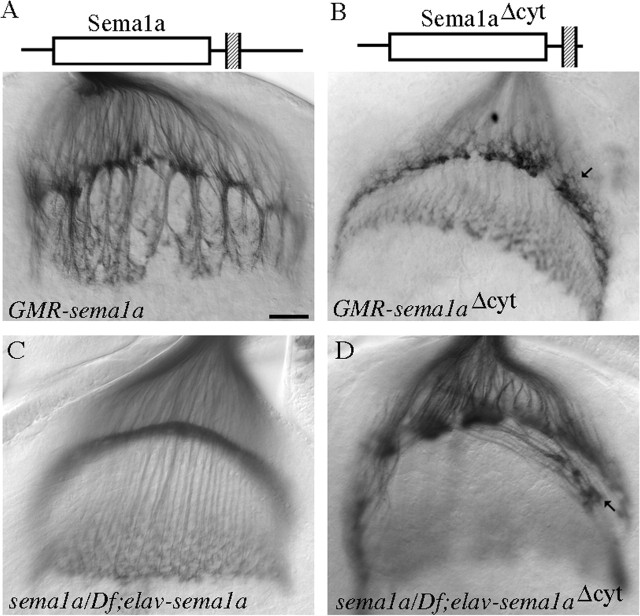Figure 4.
The cytoplasmic domain of Sema1a is required for its function in R-cell axon guidance. A, Overexpression of wild-type Sema1a under control of GMR-GAL4 caused the hyper-fasciculation of R-cell axons. B, Overexpression of sema1aΔcyt driven by GMR-GAL4 did not induce the formation of thicker bundles, but instead disrupted the organization of R1–R6 growth cones in the lamina plexus, which was indistinguishable from that in sema1aP1 mutants (Fig. 2B). C, Neuronal-specific expression of wild-type Sema1a under control of elav-GAL4 in a sema1aP1 hemizygote (i.e., sema1aP1/Df(2)N22–5) restored the normal R-cell projection pattern in 14 of 22 mutant hemispheres. The remaining eight mutant hemispheres displayed the axonal hyper-fasciculation phenotype (data not shown), likely caused by an above threshold expression level of the sema1a transgene in these individuals. D, No rescue was observed when the sema1aΔcyt transgene was expressed in a sema1aP1 hemizygote. Note the discontinuous lamina plexus and the aberrant projections of some R-cell axons (arrow) at the bottom of lamina. Scale bar: (in A) 20 μm.

